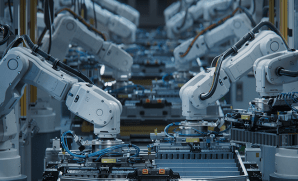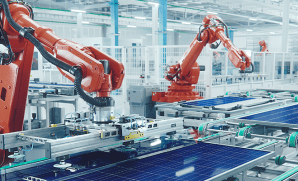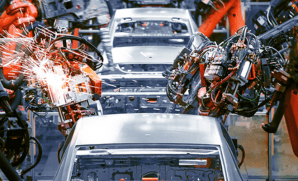Servitization for manufacturing propels the industry in the era of hyper digitization
Publish Date: September 29, 2021As collaborative efforts increase across industries blurring the lines of distinctiveness along the value chain, it is no longer enough to stay within the traditional confines, especially in manufacturing. In the pre-digitization era, manufacturers were somewhat aloof from the end consumer and servicing, focusing solely on the product. However, the idea of the product has morphed as consumer behavior changes, amplified by the recent global developments. With changing product differentiation, customer expectations, and safety escalations around the globe, commodification has become unavoidable. Product maintenance and logistics are permanently linked to manufactured products, making the shift from selling to delivering customer-tailored services more pronounced.
Disruptions and servicing
This process of establishing a relationship with clients is widely known as servitization, opens up the market for more seamless transitions along the supply chain. To support the ambitious growth plans, manufacturing cannot remain siloed. The enhanced technological capabilities readily available have also created a continuous feedback loop. With the help of data analytics, the product can send information on its functionality for magnified alertness. The product can be serviced remotely before ever being put out on the market.
Three mainline servitization levels can operate in manufacturing:
Product provisioning
At the elementary level, the product once out in the market doesn’t remain a concern or a revenue stream. The product only comes back for replacement.
Aftersales
From field service to product repairs, this level monitors product conditions and maintenance. Customers appreciate support and access to expertise on the equipment they own. It remains a mixed bag of yield for manufacturers.
Advanced servicing
Including pay-per-use contracts and integrated solutions, this level of servicing focuses on relationship building, providing programmed maintenance, implementation training, and other proactive services. Customer asset health can be remotely monitored and resolved with the help of intelligent solutions. These are offered on a subscription basis where the consumer is involved in the development of the outcome.
Servicing as a strategic differentiator
As manufacturing climbs into the service-providing business model, a new value system sets into place. Reimagining business operations receiving real-time information on product health paves the way for predictive decision-making in the manufacturing industry. A servitization vision for a manufacturing unit must note charting a map of customer requirements, making organizational provisions more available, and building a culture for higher productivity.
This demand hinges on technological advances such as IoT, AI, and machine learning, making effective resource management and enhanced visibility an easy task to complete. Implementing an efficient ERP solution would be the tenet for manufacturers looking for guaranteed and recurring sales revenues.
A perfect fit in Industry 4.0
This model cyclizes manufacturing insights, benefitting both consumers and manufacturers, the latter more so as it propels continuous product improvement and incremental and stabilized finances even in challenging market conditions. Manufacturers are ideally placed to understand product intricacies as compared to third-party agencies. Focusing on product innovation tapping into insights pushes manufacturers to chase more significant outcomes for loyal customers. Servitization gives manufacturers a competitive edge as the product-as-service (PaaS) package is harder to replicate. Also some services pureplay on SaaS (Software as services) which in turn help with many aspects for manufacturers.
Manufacturing companies can foster knowledge-centric relationships with their vendors and elevate bottom lines for all parties involved. The challenges, however, may include changing the organizational mindset and adjusting the manufacturing architecture. Besides these growing pains, servitization is all set to help manufacturers streamline their portfolios in time.


















